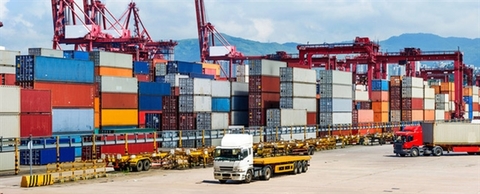
Vietnamese logistics firms are embracing technology to optimise their costs and improve their competitiveness. — VNA/VNS Photo
Vietnamese logistics firms are embracing technology to optimise their costs and improve their competitiveness, according to experts.
According to the Viet Nam Logistics Business Association (VLA), the fourth industrial revolution and breakthroughs in technology have brought about many changes in the logistics industry.
Keeping up with technological trends to keep pace with the global industry is essential.
But experts said the number of companies using advanced technologies was modest.
They said the industry needed to invest more in technology to improve its service quality.
Speaking at a seminar on Smart Logistics held last week on the sidelines of the first Viet Nam International Port, Infrastructure and Logistics Exhibition & Conference in HCM City, Dr Ngo Van Nhon, chairman of the Viet Nam Quality Association of HCM City, said Vietnamese logistics firms only provided some preliminary services in the logistics services chain.
These were single services and not highly integrated, with only a few large players offering a closed service chain.
The inconsistency in the infrastructure had limited the development of the logistics industry, he said.
According to Nguyen Duy Anh, deputy head of academic affairs at the HCM City University of Technology, Vietnamese logistic enterprises mainly cater to small supply chains such as delivery, storage for rent, and customs declaration.
International operations are mostly handled by foreign companies.
Nguyen Manh Cuong, deputy director of the Agency for Southern Affairs at the Ministry of Science and Technology, said Viet Nam ranked 39th out of 160 in the World Bank’s 2018 Logistics Performance Index, a big jump from two years earlier when it was 64th, and third in Southeast Asia after Singapore (7th) and Thailand (32nd).
The country targets a rank of 30th-35th by 2025, according to Cuong. The sector targets annual growth rate of 15-20 per cent and a share of 8-10 per cent in the country’s GDP by then.
According to the VLA, the sector, which contributes around 5 per cent of GDP now, has more than 4,000 local and foreign companies.
The latter account for just 1 per cent in terms of numbers but have a 12.7 per cent market share.
To realise the targets, delegates urged logistics companies to focus on improving their technology and logistics platform and increase digitisation and human resource training to meet the sector’s development demand in the coming time. — VNS